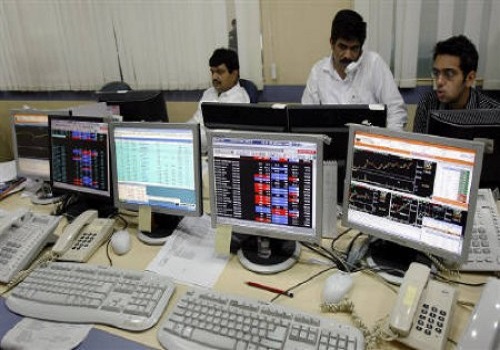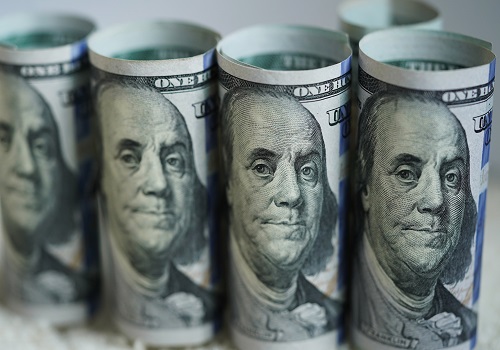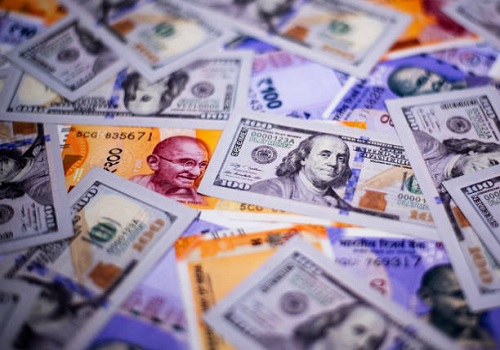Perspective by Ms. Riya Singh - Research Analyst, Mid-week update - Commodities and Currency , Emkay Global Financial Services

Below the Perspective by Ms. Riya Singh - Research Analyst, Mid-week update - Commodities and Currency , Emkay Global Financial Services
1. Current Trends in the Japanese Yen
The Japanese Yen has been experiencing significant fluctuations recently, marked by substantial interventions from the Japanese authorities in the currency market. Last week, Japan's currency chief, Masato Kanda, might have orchestrated back-to-back interventions but no o?icial statement has been released. On July 11, there is most likely an intervention that was done, a move was executed during a period of low volatility and following soft US economic data, causing the Yen to strengthen against the dollar. The USDJPY saw a fall from 161.76 to 157.44 on the same day. Despite an initial appreciation, the gains began to fade, prompting another intervention on 17th July. This second move only nudged the Yen but did trigger squaring o? carry trades which have from then on forward taken the Japanese yen to test lows of 151.94. The move has been found di?icult to sustain on the back of the quick recovery toward 154 levels that we are witnessing in today’s session. This does highlight the challenges of maintaining the element of surprise and e?ectiveness in currency interventions.
2. Triggers Behind the Yen's Movement
* Interest Rate Di?erentials: The primary driver is the interest rate di?erential between Japan and other major economies. While the Bank of Japan (BOJ) has maintained ultra-low interest rates, central banks in the US and Europe have been raising rates to combat inflation. This makes the Yen less attractive to investors seeking higher returns which is why it had witnessed such a steep depreciation when central banks were on an interest rate hiking spree.
* Market Speculation: Speculation about potential rate hikes by the BOJ has driven the Yen's recent rally. However, this rally remains fragile as it heavily relies on the BOJ's upcoming policy decisions.
* BOJ Intervention: At least 2 – 3 interventions are most likely have been done to take the USDJPY from 161.76 to testing lows of 151.94. 3. Implications for the Bank of Japan's Monetary Policy in July The BOJ faces a complex dilemma as it approaches its policy meeting at the end of July. Policymakers are caught between the need to support the Yen and the desire to establish a healthy inflation trend within the Japanese economy. Raising interest rates could bolster the Yen but might also disrupt e?orts to stimulate wage growth, prices, and overall economic growth. There is around a 40% probability of a rate hike of around 10 to 15 bps in the upcoming policy rate decision. If the BOJ disappoints expectations by not raising rates or by maintaining its bond-buying program, it could lead to a return of decline in the Yen's value but will aid the BOJ target of maintaining healthy inflation in the economy.
4. Impact on the US Dollar
The movements of the Japanese Yen directly influence the US Dollar (USD). When the Yen strengthens due to interventions or positive economic data, the USD typically weakens against it. Conversely, if the Yen falters due to lacklustre policy decisions or stronger US economic performance, the USD gains strength. This is what we have been witnessing for past two weeks where the Japanese Yen has been one of the keys factors keeping the greenback pressurised.
5. Additional Considerations
* Economic Indicators: Key economic indicators, such as inflation rates and wage growth, play a critical role in shaping market expectations and the BOJ's policy decisions. The recent acceleration in Tokyo's inflation and solid wage growth data support the case for a more active BOJ stance in July.
* Market Sentiment: Market sentiment remains cautious. The potential for a dovish BOJ decision could lead to a reversal of the Yen's recent gains, especially if local traders seek higher-yielding currencies.
6. Impact on Bullions
The BOJ's monetary policy decisions, especially regarding interest rates, can significantly impact gold and silver. If the interest rate is increased it would lead to a weaker US dollar and vice versa. Even if more unwinding of trades happens in the above scenario, it would gather demand for the Japanese Yen making the dollar weak. A weaker US Dollar, resulting from a stronger Yen, could provide support to the gold and silver prices.
Conclusion
The Japanese Yen is at a critical juncture, influenced by domestic economic policies, global interest rate di?erentials, and market speculation. The upcoming BOJ policy meeting in July will be pivotal in determining the Yen's direction. A balanced approach by the BOJ, considering both inflation trends and currency stability, will be essential in navigating the current economic landscape
Above views are of the author and not of the website kindly read disclaimer










Tag News

Quote on Currency Trends by Anindya Banerjee, Kotak Securities









